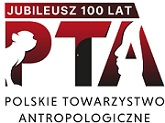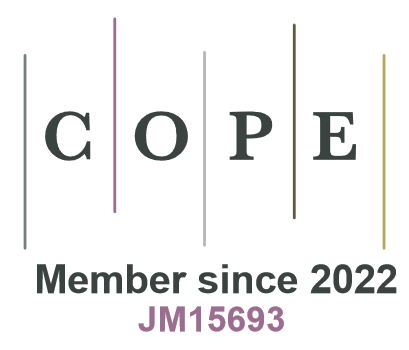Somatic, mood, and vasomotor symptoms at midlife in relation to family structure and household workloads in Sylhet, Bangladesh
DOI:
https://doi.org/10.2478/anre-2013-0019Keywords:
Bangladesh, menopause, symptoms, activity patterns, hot flashesAbstract
The purpose of this study was to test whether the frequencies of vasomotor, somatic, and emotional symptoms at midlife were associated with household composition or workloads. Patrilocal family arrangements are common in Bangladesh and, since mothers-in-law hold a position of power vis-à-vis their daughters-in-law, we hypothesized that living with a mother-in-law would increase the likelihood of symptoms at midlife, while living with a daughter-in-law would decrease likelihood of symptoms. We also hypothesised that women with high levels of household workloads would be more likely to report symptoms associated with midlife.
Women aged 35–59 living in Sylhet, Bangladesh, (n=157) participated in interviews and anthropometric measures. Symptom frequencies during the past two weeks were collected. Household workloads were computed as minutes spent in housework, caring for dependents, and cooking. Daily values were multiplied by times per week the activity was carried out. Logistic regression was used to evaluate the association between family composition, workloads, and symptoms.
Dizzy spells, nervous tension, lack of energy, aches/stiffness in joints, and trouble sleeping were most frequent. Hot flashes were reported by 46% of participants. Women spent more hours caring for dependents than cooking or doing housework. The likelihood of hot flashes increased with time spent in housework and cooking, with daughters in the household, and with chewing betel nut. Daughters-in-law in the household decreased the likelihood of hot flashes. The likelihood of nervous tension increased with peri-menopausal status, stress, and sons in the household, and decreased with more hours spent caring for dependents.
The frequency of somatic symptoms and depressed mood exceeded the frequency of hot flashes. Household composition and workloads were more important than menopausal status in explaining variation in symptom frequencies. After controlling for other variables, the presence of mothers-in-law did not increase the likelihood of reporting symptoms at midlife; however, the presence of a daughter-in-law reduced the likelihood of hot flashes, perhaps because of fewer hours spent on housework and cooking.
Downloads
References
Abdullah, Taherunnessa A. 1974. Polli Ongonader Jemon Dekhechi (Village Women as I Saw Them), Comilla: BARD.
View in Google Scholar
Arens J, van Beurden J. 1980. Jhagrapur – Poor Peasants and Women in a Village in Bangladesh, New Dehli: Orient Longman Ltd.
View in Google Scholar
Avis NE, Crawford SL, McKinlay SM. 1997. Psychosocial, behavioral, and health factors related to menopause symptomatology. Women’s Health 3:103–20.
View in Google Scholar
Avis NE, Kaufert PA, Lock M, McKinlay SM, Vass K. 1993. The evolution of menopausal symptoms. Bailliere’s Clin Endocrinol Metabol 7:17–32.
View in Google Scholar
Avis NE, Stellato R, Crawford S, Bromberger J, Ganz P. Cain V, Kagawa-Singer. 2001. Is there a menopausal syndrome? Menopausal status and symptoms across racial/ ethnic groups. Soc Sci Med 52(3):345–56.
View in Google Scholar
Aziz K M A. 1989. Gender Creation from Birth to Adolescence in Rural Bangladesh. Dhaka; University Press Ltd.
View in Google Scholar
Baig LA, Karim SA. 2006. Age at menopause, and knowledge of and attitudes to menopause, of women in Karachi, Pakistan. Menopause Int 12: 71–4.
View in Google Scholar
BANBEIS, Bangladesh Bureau of Educational Information and Statistics, http://www.banbeis.gov.bd/bd_pro.htm accessed 8/26/13.
View in Google Scholar
BBS Bangladesh Bureau of Statistics www.bbs.gov.bd accessed 8/26/13.
View in Google Scholar
Beyene Y. 1989. From Menarche to Menopause: Reproductive Lives of Peasant Women in Two Cultures. Albany, New York: SUNY Press.
View in Google Scholar
Bharadwaj JA, Kendurkar SM, Vaidya PR. 1983. Age and symptomatology of menopause in Indian women. Journal of Postgraduate Medicine 29(4):218–22.
View in Google Scholar
Binfa L, Castelo-Branco C, Blumel JE, Cancelo MJ, Bonilla H, Monoz I, Vergara V, Izaquirre H, Sarra S, Rios RV. 2004. Influence of psycho-social factors on climacteric symptoms. Maturitas 48(4):425–31.
View in Google Scholar
Blanchet T. 1987. Women, Pollution and Marginality – Meanings and Rituals of Birth in Rural Bangladesh. Dhaka; University Press Ltd.
View in Google Scholar
Brambilla D, McKinlay SM. 1989. A prospective study of factors affecting age at menopause. J Clin Epidemiol 42:1031–9.
View in Google Scholar
Brown JK. 1992. Lives of middle-aged women. In: Kerns V, Brown JK, editors. In Her Prime: New Views of Middle-Aged Women. Chicago, IL: University of Illinois Press, 17–30.
View in Google Scholar
Chen M, Ghaznavi R. 1980. Women in Bangladesh: Food for Work and Socioeconomic Change. Dhaka; University Press Ltd.
View in Google Scholar
Chowdhury T. 1993. Segregation of Women in Islamic Societies of South Asia and its Reflection in Rural Housing-Case Study in Bangladesh. MCHG;McGill:CA.
View in Google Scholar
Chu NS. 1993. Cardiovascular responses to betel chewing. J Formos Med Assoc 92:835–7.
View in Google Scholar
Chu NS. 2002. Neurological aspects of betel chewing. Addict Biol 7:111–4.
View in Google Scholar
Chuni N, Sreeramareddy CT. 2011. Frequency of symptoms, determinants of severe symptoms, validity of and cut-off score for Menopause Rating Scale (MRS) as a screening tool: a cross-sectional survey among midlife Nepalese women. BMC Womens Health 11:30 (9 pages).
View in Google Scholar
Deng J-F, Ger J, Tsai W-J, Kao W-F, Yang C-C. 2001. Acute toxicities of betel nut: rare but probably overlooked events. Clin Toxicol 39(4):355–60.
View in Google Scholar
Dennerstein L, Dudley EC, Hopper JL, Guthrie JR, Burger HG. 2000. A prospective population-based study of menopausal symptoms. Obstet Gynecol 96:351–8.
View in Google Scholar
Dennerstein L, Lehert P, Koochaki PE, Graziottin A, Leiblum S, Alexander JL. 2007. A symptomatic approach to understanding women’s health experiences: a cross-cultural comparison of women aged 20 to 70 years. Menopause 14:688–96.
View in Google Scholar
Felson DT, Chaisson CE. 1997. Understanding the relationship between body weight and osteoarthritis. Baillieres Clin Rheumatol 11(4):671–81.
View in Google Scholar
George T. 1996. Women in a south Indian fishing village: role identity, continuity, and the experience of menopause. Health Care Women International 17(4):271–9.
View in Google Scholar
Gold EB, Sternfeld B, Kelsey JL, Brown C, Mouton C, Reame N, Salamone L, Stellato R. 2000. Relation of demographic and lifestyle factors to symptoms in a multi-racial/ ethnic population of women 40–55 years of age. Am J Epidemiol 152(5):463–73.
View in Google Scholar
Gold EB, Block G, Crawford S, Lachance L, FitzGerald G, Miracle H, Sherman S. 2004. Lifestyle and demographic factors in relation to vasomotor symptoms: baseline results from the Study of Women’s Health Across the Nation. Am J Epidemiol 159: 1189–99.
View in Google Scholar
Gupta P, Sturdee DW, Hunter MS. 2006. Midage health in women from the Indian subcontinent (MAHWIS): general health and the experience of menopause in women. Climacteric 9(1):13–22.
View in Google Scholar
Guthrie JR, Dennerstein L, Taffe JR, Lehert P, Burger HG. 2004. The menopausal transition: a 9-year prospective population-based study. The Melbourne Women’s Midlife Health Project. Climacteric 7:375–89.
View in Google Scholar
Hardy R, Kuh D. 2002. Change in psychological and vasomotor symptom reporting during the menopause. Soc Sci Med 55(11):1975–88.
View in Google Scholar
Igarashi M, Saito H, Morioka Y, Oiji A, Nadaoka T, Kashiwakura M. 2000. Stress vulnerability and climacteric symptoms: life events, coping behavior, and severity of symptoms. Gynecol Obstet Invest 49(3):170–8.
View in Google Scholar
Issa RI, Griffin TM. 2012. Pathobiology of obesity and osteoarthritis: integrating biomechanics and inflammation. Pathobiol Aging Age Relat Dis 2:17470
View in Google Scholar
Kaufert PA, Gilbert P, Tate R. 1992. The Manitoba Project: a re-examination of the link between menopause and depression. Maturitas 14:143–55.
View in Google Scholar
Kaur S, Walia I, Singh A. 2004. How menopause affects the lives of women in sub urban Chandigarh, India. Climacteric 7(2):175–80.
View in Google Scholar
Kronenberg F, Barnard RM. 1992. Modulation of menopausal hot flashes by ambient temperature. J Therm Biol 17:43–9.
View in Google Scholar
Kuh DL, Wadsworth M, Hardy R. 1997. Women’s health in midlife: the influence of the menopause, social factors and health in earlier life. British J Obstet Gynaecol 104(8):923–33.
View in Google Scholar
Lock M. 1998. Menopause: lessons from anthropology. Psychosomatic Med 60:410–9.
View in Google Scholar
McKinlay JB, McKinlay SM, Brambilla D. 1987. The relative contributions of endocrine changes and social circumstances to depression in mid-aged women. J Health Soc Behav 28:345–63.
View in Google Scholar
Melby MK, Lock M, Kaufert P. 2005. Culture and symptom reporting at menopause. Human Repro Update 11(5):495–512.
View in Google Scholar
Melby MK, Sievert LL, Anderson D, Obermeyer CM. 2011. Overview of methods used in cross-cultural comparisons of menopausal symptoms and their determinants: Guidelines for strengthening the reporting of menopause and aging (STROMA) Studies. Maturitas 70:99–109.
View in Google Scholar
Molnar GW. 1981. Menopausal hot flashes: their cycles and relation to air temperature. Obstet Gynecol 57(supp.): 52–5.
View in Google Scholar
Murphy L, Sievert LL, Begum K, Sharmeen T, Chowdhury O, Muttukrishna S, Bentley GR. 2013. Life course effects on age at menopause among Bangladeshi sedentees and migrants to the UK. Am J Hum Biol 25(1):83–93.
View in Google Scholar
Murshid G. 2007. Kalapanir Hatchani: Bilete Bangalir Itihas. Abasar Publications. Dhaka
View in Google Scholar
Nagata C, Shimizu H, Takami R, Hayashi M, Takeda N, Yasuda K. 2000. Serum concentrations of estradiol and dehydroepiandrosterone sulfate and soy product intake in relation to psychologic well-being in peri- and postmenopausal Japanese women. Metabolism 49:1561–4.
View in Google Scholar
Norton SA. 1998. Betel: consumption and consequences. J Am Acad Dermatol 38:81–8.
View in Google Scholar
Núñez-de la Mora A, Napolitano D, Uddin F, Choudhury O, Bentley GR. 2007. Betel nut use among first and second generation Bangladeshi women in London, UK, and women resident in Bangladesh J Immigr Minor Hlth 9:299–306.
View in Google Scholar
Nusrat N, Nishat Z, Gulfareen H, Aftab M, Asia N. 2008. Knowledge, attitude and experience of menopause. J Ayub Med Coll Abbottabad 20(1) 56–9.
View in Google Scholar
Randhawa I, Premi HK, Gupta T. 1987. The age at menopause in the women of Himachal Pradesh, and the factors affecting the menopause. Indian J Public Health 31(1):40–4.
View in Google Scholar
Raybeck D. 1992. A diminished dichotomy: Kelantan Malay and traditional Chinese perspectives. In: Kerns V, Brown JK, editors. In Her Prime: New Views of Middle-Aged Women. Chicago, IL: University of Illinois Press, 173–89.
View in Google Scholar
Robinson G. 1996. Cross-cultural perspectives on menopause. J Nerv Ment Dis 184:453–8.
View in Google Scholar
Schwingl PJ, Hulka BS, Harlow S. 1994. Risk factors for menopausal hot flashes. Obstet Gynecol 84:20–34.
View in Google Scholar
Sengupta A. 2003. The emergence of the menopause in India. Climacteric 6(2):92–5.
View in Google Scholar
Sievert LL, Begum K, Sharmeen T, Chowdhury O, Muttukrishna S, Bentley G. 2008. Patterns of occurrence and concordance between subjective and objective hot flashes among Muslim and Hindu women in Sylhet, Bangladesh. Am J Hum Biol 20:598–604.
View in Google Scholar
Sievert LL, Flanagan EK. 2005. Geographical distribution of hot flash frequencies: considering climatic influences. Am J Phys Anthropol 128:437–43.
View in Google Scholar
Sievert LL, Morrison LA, Reza AM, Brown DE, Kalua E, Tefft HAT. 2007a. Age-related differences in health complaints: The Hilo Women’s Health Study. Women and Health 45(3):31–51.
View in Google Scholar
Sievert LL, Obermeyer CM, Saliba M. 2007b. Symptom groupings at midlife: cross-cultural variation and association with job, home, and life change. Menopause 14(4):798–807.
View in Google Scholar
Singh A, Arora A K. 2005. Profile of menopausal women in rural north India. Climacteric 8(2):177–84.
View in Google Scholar
Solway JS. 1992. Middle-aged women in Bakgalagadi society (Botswana). In: Kerns V, Brown JK, editors. In Her Prime: New Views of Middle-Aged Women. Chicago, IL: University of Illinois Press, 49–58.
View in Google Scholar
Thurston RC, Bromberger JT, Joffe H, Avis NE, Hess R, Crandall CJ, Chang Y, Green R, Matthews KA. 2008. Childhood abuse or neglect is associated with increased vasomotor symptom reporting among midlife women. Menopause 15:16–22.
View in Google Scholar
UNDP United Nations Development Program, Human Development Reports http://hdrstats.undp.org/en/countries/profiles/BGD.html accessed 8/26/2013.
View in Google Scholar
Waidyasekera H, Wijewardena K, Lindmark G, Naessen T. 2009. Menopausal symptoms and quality of life during the menopausal transition in Sri Lankan women. Menopause 16(1):164–70
View in Google Scholar
Wasti S, Robinson SC, Akhtar T, Khan S, Badaruddin N. 1993. Characteristics of menopause in three socioeconomic urban groups in Karachi, Pakistan. Maturitas 16:61–9.
View in Google Scholar
World Health Organization (WHO). 1996. Research on the Menopause in the 1990s. WHO Technical Report Series No. 866, Geneva: WHO.
View in Google Scholar
Wyatt TA. 1996. Betel nut chewing and selected psycho-physiological variables. Psychol Rep 79:451–63.
View in Google Scholar
Yahya S, Rehan N. 2002. Perceptions, age, pattern and symptoms of menopause among rural women of Lahore. J Ayub Med Coll Abbottabad 14(3):9–12.
View in Google Scholar
Downloads
Published
How to Cite
Issue
Section
License

This work is licensed under a Creative Commons Attribution-NonCommercial-NoDerivatives 4.0 International License.








